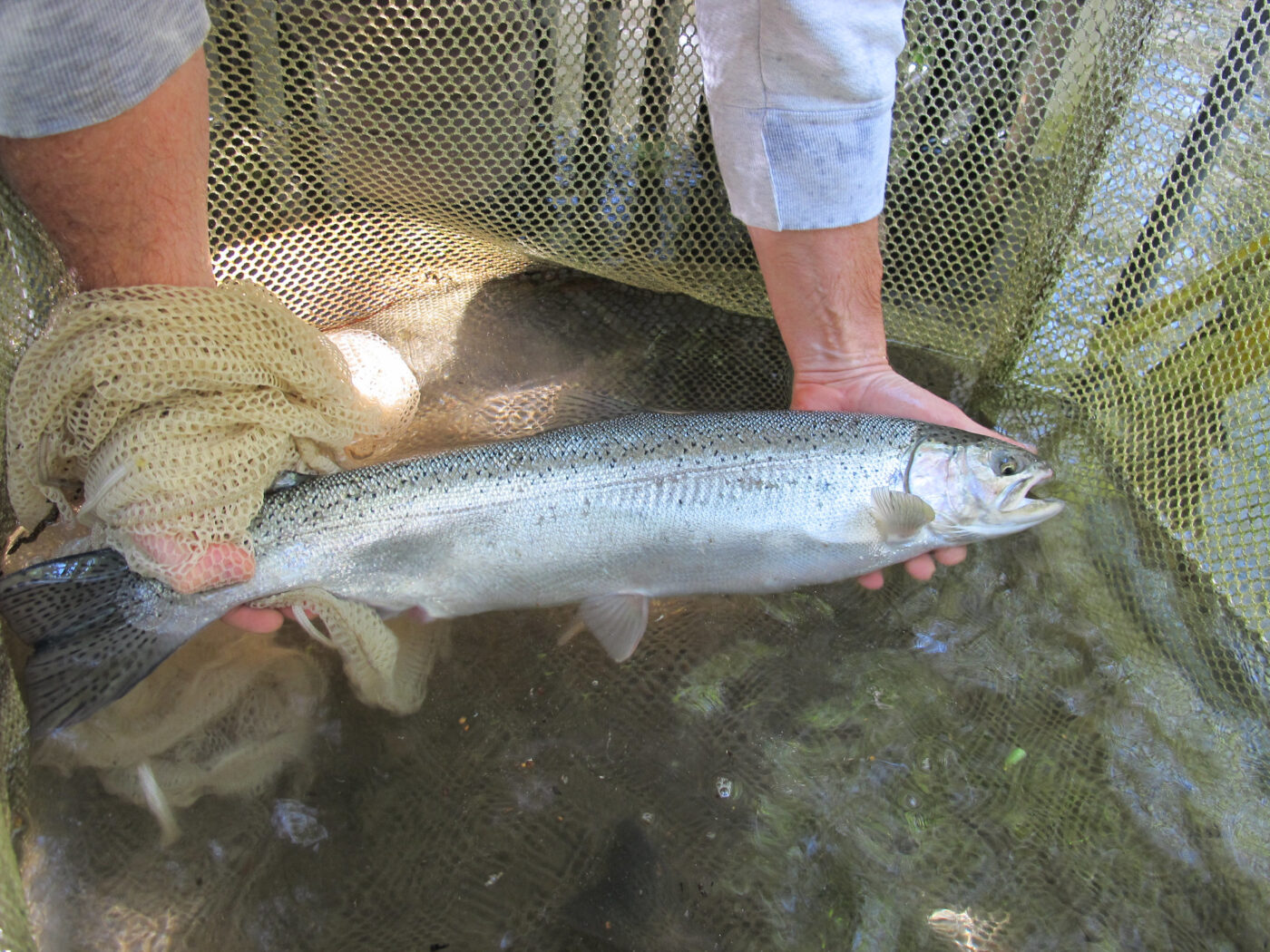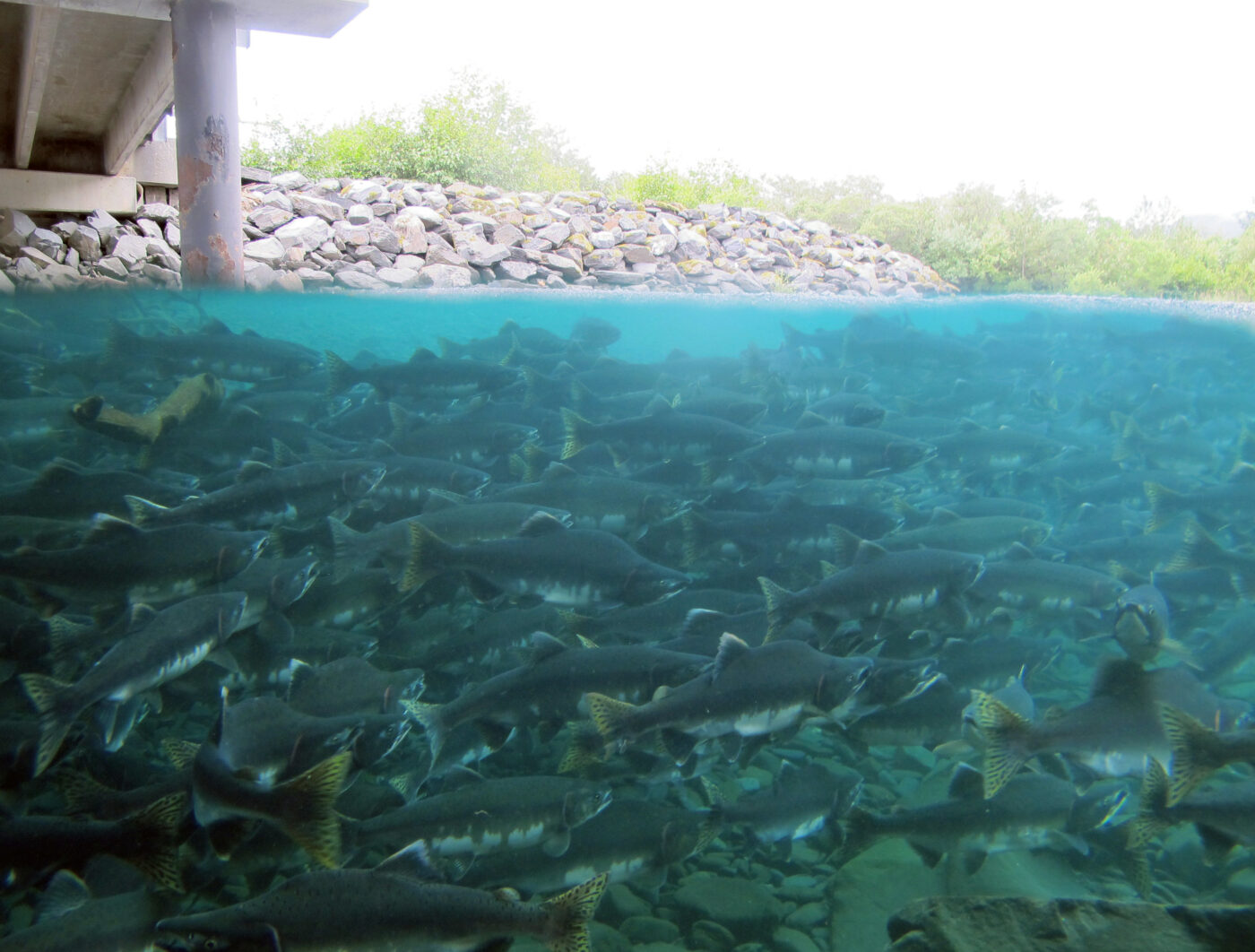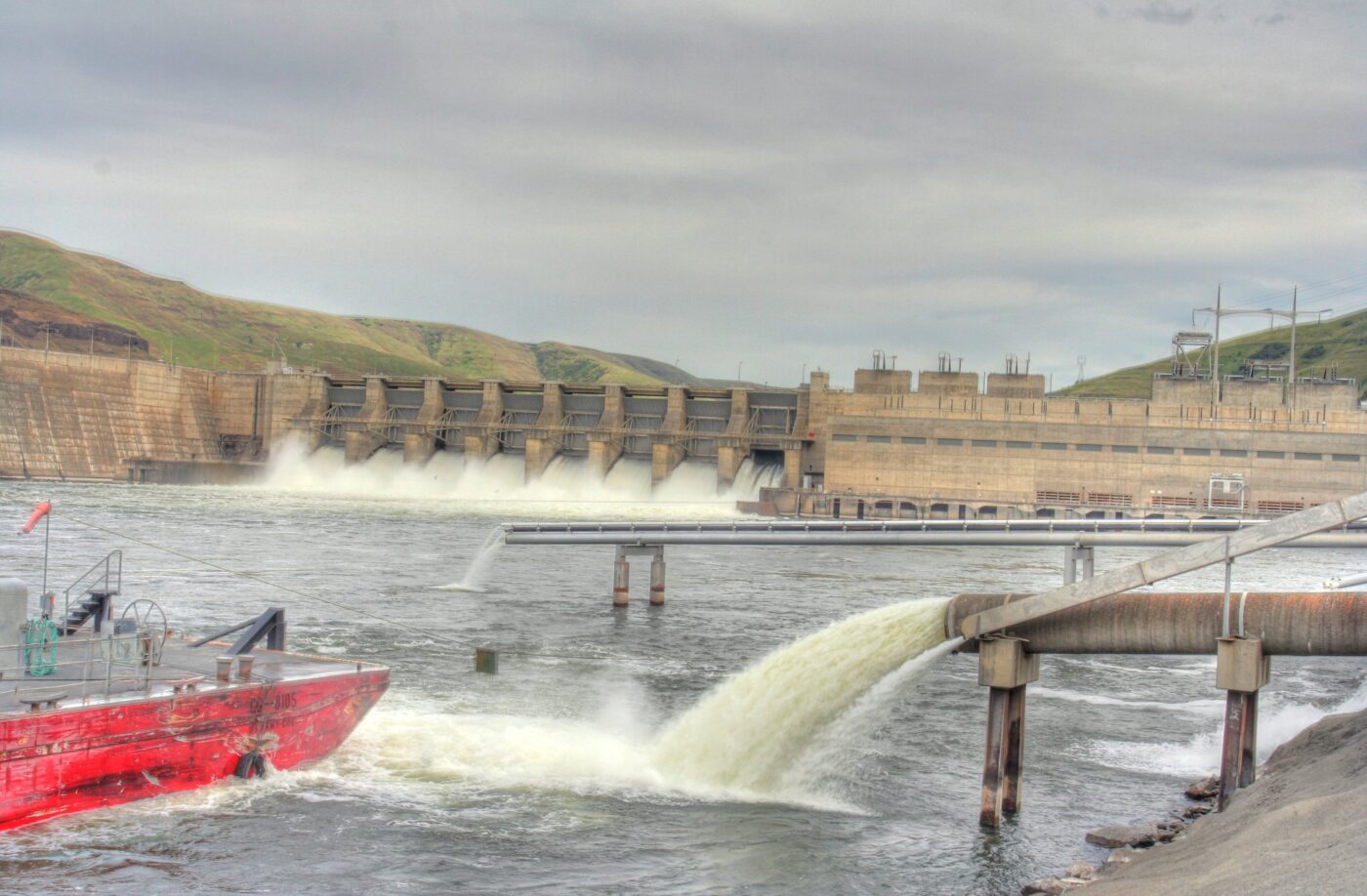Tuesday September 3, 2024

Anadromous species like salmon make grueling journeys from their birthplaces in streams out to the ocean, and do it again in reverse to come back as adults and spawn. Salmonids sojourn in the sea because the marine environment provides a bountiful seafood buffet, allowing them to grow bigger and faster than they could in a stream. However, multiple species have evolved this strategy, which can lead to conflict at the dinner table. This type of interaction was demonstrated in a recent study in the Snake River Basin, where researchers investigating patterns in the length of steelhead (Oncorhynchus mykiss) revealed trends connected to the life cycle of pink salmon (O. gorbucha). Their results indicate that competition between pinks and steelhead is occurring even once the two species have made their way to the resource-rich North Pacific Ocean (Vosbigian et al. 2024), a finding which has important implications for the future of steelhead in a warming world.

Despite its importance in ecology, detecting competition is challenging, especially when dealing with species that are interacting across enormous areas hidden beneath the ocean’s surface. Fortunately, scientists can look at traits like growth as a means of indirectly detecting these interactions. In other words, by looking at the size of salmonids when they return to rivers to spawn, researchers can get an idea of interactions they may have had in the ocean. Steelhead that forage and grow to adulthood in the North Pacific Ocean are likely to encounter many of their salmonid cousins, as these species not only feed in the same areas, but also share a lot of overlap in what they eat. For instance, both pink salmon and steelhead are calamari enthusiasts, and they compete for gonatid squid (Berryteuthis anonychus) in areas where they co-occur.
However, variation in salmonid cycles affects the degree to which they compete with one another. Pink salmon have a two-year life history, and their abundance fluctuates on a biannual cycle where they are more abundant in odd years than even. Steelhead, on the other hand, can mature in the ocean for one, two, or three years. Snake River steelhead, in particular, overlap with different populations of pink salmon at different stages in their maturation and migration – leaving plenty of opportunity for these species to intermingle while in the briny deep. The researchers leveraged the cycles of shifting pink salmon abundance to evaluate inter-salmonid competition by studying the size of steelhead returning to spawn in the Snake River Basin. They predicted that the lengths of these returning steelhead would be negatively correlated to pink salmon abundance.

Because all steelhead returning to this system are processed through a trap at the Lower Granite Dam, scientists are able to collect measurements, scales for aging, and genetic samples for sex and stock identification. The researchers developed a dataset of 27,259 fish using these types of samples from 2008-2019. Meanwhile, estimates of pink salmon abundance were obtained from studies that compiled data on catch, harvest, spawner abundances, and escapement from fisheries management agencies in Alaska, British Columbia, Washington, the Columbia River Basin, and Russia.
The researchers tested multiple linear mixed models to relate steelhead lengths to pink salmon abundances. Ultimately, they found that variation in steelhead size was best explained by a model that included both Eastern Kamchatka and North American pink salmon abundance. Further, they found that steelhead were an average of 38 mm longer during even years compared to odd years. The abundance of North American pink salmon was found to negatively impact age one steelhead lengths, whereas the abundance of Eastern Kamchatka pink salmon was negatively correlated with age two and age three steelhead lengths. Further, they found there was an annual decline in steelhead lengths, with the average length of all steelhead decreasing by 0.85 mm per year.

The two-year pattern in steelhead size detected in this study suggests that competition for food resources has significant impacts even for older fish, challenging conventional knowledge. Reduced growth from competition may lead to population-level impacts, as steelhead survival and fecundity (or how many offspring individuals produce) are directly connected to size. For Snake River steelhead, which are listed as Threatened, even small changes in survival may have major implications for the stability of their populations. Plus, steelhead may be even more sensitive to competition as the oceans warm due to climate change – with increasing temperatures boosting pink salmon abundance while at the same time increasing the amount of food that steelhead need to grow. The competition detected by this study highlights the importance of monitoring salmonid ecology in both fresh- and saltwater, as well as the need for improving our understanding of how these interactions may shift in the face of a changing climate.
Header Image: A coastal steelhead (Oncorhynchus mykiss).
This post was featured in our weekly e-newsletter, the Fish Report. You can subscribe to the Fish Report here.
